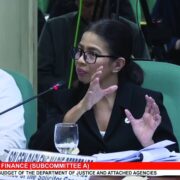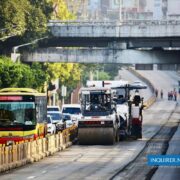Preventing school congestion

One of the most salient issues that we have tackled in the Second Congressional Commission on Education (EdCom II) is school congestion. This is particularly prevalent in fast-growing cities and municipalities. In our recent consultations, we have seen schools struggling to manage the influx of students. It becomes evident that this is not merely a local issue, but one tied to the planning of resettlement and housing programs across the country.
The problem of school congestion and class shifting is not something new to us, but the scale we have observed recently is alarming: in Naic, Cavite, schools are resorting to multiple shifts to accommodate the astronomic surge in enrollment, with classrooms meant for 40 students now holding up to 200. Modular instruction has thus become the norm even for Kinder to Grade 3 pupils, when they are supposed to learn foundational literacy skills.
A critical angle that the commission has examined is the link between housing policies and education infrastructure. Large-scale resettlement and housing programs have prioritized providing homes for informal settlers and low-income families, but often fail to take into account the educational needs of the communities they serve.
This disconnect is very apparent in Naic, Cavite, a town that has become a hub for resettlement projects. As someone from Naic, I have personally witnessed its transformation from a quiet coastal municipality to a bustling center of activity. New housing developments promised progress and opportunities, but they have also brought challenges we failed to foresee.
Naic’s population boom has been driven by resettlement projects managed by the National Housing Authority (NHA) and private developers. These projects have relocated thousands of families from Metro Manila and nearby areas, creating a surge in demand for public services, particularly education. Schools like Ciudad Nuevo Elementary School now face impossible conditions: over 2,000 learners from Grades 1 to 6 crammed into just six classrooms.
As schools take on this big responsibility, agencies like the Department of Human Settlements and Urban Development (DHSUD), the Department of the Interior and Local Government (DILG), the NHA, as well as the local government must confront the consequences of inadequate planning and poor coordination. While current housing policies, including Batas Pambansa No. 220 of 1982, require educational facilities for developments with more than 1,500 units, they are silent on the consequences of smaller housing projects that, when combined, exceed 1,500. In the case of Naic, three of the schools we visited cater to 48 resettlement and low-cost housing communities.
Even if we continue to build more classrooms, the issue will persist if the need for schools is continuously overlooked in the planning of housing projects, especially resettlement and low-cost/socialized ones. Multiplied several times across the country, cases like Naic inevitably add up to aggravate classroom backlogs that are later left primarily for the Department of Education (DepEd) to solve. The situation is untenable.
From our discussions, three directions were clear: It is imperative to (1) update housing policies to account for the realities of today; (2) formalize coordination mechanisms between DepEd, DHSUD, and DILG, and (3) review how local government units (LGUs) could be better monitored and supported (e.g., use of the Special Education Fund and the approval of housing developments) to ensure adequate social services.
The discussion on Naic brought to the fore how classroom congestion could not be solved just by our education agencies. For us to succeed in providing quality education to all Filipino learners, it is critical that we are able to work closely with agencies like DHSUD, DILG, provincial and LGUs, and even private companies. Taking our cue from health care, it is also high time for us to find “preventive” rather than just “curative” interventions.
—————-
Dr. Karol Mark Yee is executive director of EdCom II.

















